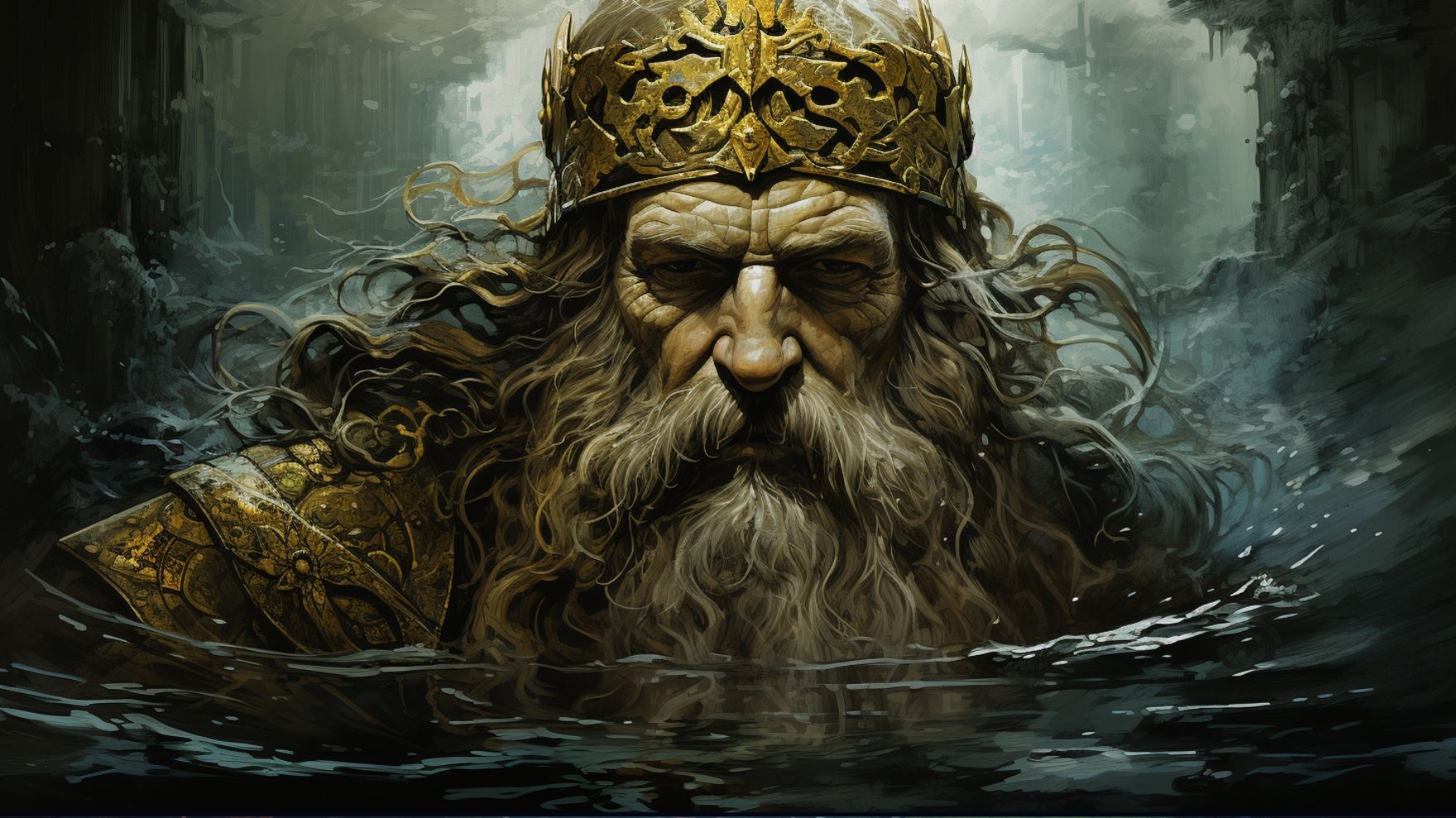Condatis God: Unveiling the Ancient Deity of River Confluences

Condatis god, worshipped in ancient Britain, held a significant role in the convergence of rivers. Inscriptions and altars dedicated to Condatis have been found, shedding light on the deity’s origins and significance.
This article explores Condatis’ association with Mars and delves into artifacts and symbols connected to the worship of this enigmatic god. Additionally, Condatis’ potential role in healing and its wider influence are subjects of intrigue.
Join us on this journey of unraveling the ancient worship of Condatis and its mysterious symbolism.
The Deity of River Confluences: Exploring the Ancient Worship of Condatis
The worship of Condatis, the deity associated with the merging of rivers, holds a significant place in ancient British culture. This section delves into the origins and significance of Condatis in ancient Britain, shedding light on the beliefs and practices surrounding this enigmatic god.
Additionally, the inscriptions and altars dedicated to Condatis provide valuable insights into the level of devotion and reverence accorded to this deity.
Origins and Significance of Condatis in Ancient Britain
Condatis, whose roots can be traced back to ancient Wales or a similar British source, had a prominent role in areas where rivers converged. One such location was Chester-le-Street, where the merging of the Cong Burn and Wear rivers held immense importance for local businesses, given the Wear River’s navigability.
This suggests that Condatis, much like the goddess Ritona, may have facilitated water travel during that era.
Inscriptions and Altars Dedicated to Condatis
The discovery of three complete inscriptions and one fragmentary inscription dedicated to Condatis highlights the deep devotion and fulfillment of vows made by different individuals. Names such as Marte Condates Arponatus, Attonius Quintianus, and Valerius Probianus are mentioned, indicating the diverse worshipers who sought Condatis’ favor.
A fascinating aspect emerges with Attonius, who claimed to have received a mandate from Condatis through a vision or dream, which he diligently fulfilled. The potential involvement of a dream interpreter in comprehending this mandate adds further intrigue.
Role of Condatis in River Confluences and Navigability
Condatis was revered as a god associated with river confluences, where waterways met and merged. The artifacts discovered in proximity to the inscriptions, including a copper axe, coins, ceramic remnants, worked stones, and an iron key, shed light on potential ritualistic and practical aspects related to Condatis.
Speculations suggest that the copper axe may have been utilized in ship construction, while the iron key could represent a cult symbol associated with liminal deities. The presence of a tetraskelion, facing right on one of the altars, accentuates solar connotations and raises questions regarding Condatis’ local worship in the Durham area, as evidenced by the fragmentary inscription discovered in Scotland.
Condatis and Mars: Unveiling the Connection
Before delving into the intricate association between Condatis and Mars, it is important to explore the intriguing connection that exists between these ancient deities.
Exploring the Association between Condatis and Mars
Upon analyzing the scarce information available, it becomes evident that Condatis shares a significant link with Mars in the context of ancient British and Gallic beliefs.
Although the exact nature of this association remains enigmatic, it is believed that Mars held a prominent role in the spiritual and cultural aspects of these regions during that time.
A deep dive into the inscriptions and altars dedicated to Condatis reveals subtle hints pointing towards the deity’s affiliation with Mars.
The proximity of Condatis’ worship sites to Mars-associated artifacts further strengthens this connection.
Possible Roles and Attributes of Condatis as a Deity
While the specific roles and attributes assigned to Condatis may not be explicitly articulated in the available sources, certain conjectures can be made based on similar deities of the era. Mars, being associated with various domains, including war, agriculture, and fertility, may shed light on the potential roles and attributes of Condatis as a deity.
- War: Similar to Mars, Condatis might have been perceived as a protector and source of strength in times of conflict.
- Agriculture: As Mars was often linked to agricultural abundance, it is plausible that Condatis played a role in ensuring plentiful harvests and the prosperity of local communities.
- Fertility: Given the association of Mars with fertility, it is conceivable that Condatis held sway over aspects related to reproduction and the well-being of families.
Comparison with Other Deities Associated with Mars
While exploring the realm of Mars-associated deities, it is crucial to compare and contrast their roles, attributes, and significance to better understand Condatis’ place within this framework.
Notable deities like Nodens, Ogmios, and Lenus were also associated with Mars, presenting intriguing possibilities for the multifaceted nature of Condatis’ influence.
By examining the similarities and differences between these deities, researchers can gain valuable insights into the distinct qualities and potential importance of Condatis within the spiritual landscape of ancient Britain.
- Nodens: Known for his healing capabilities and maritime associations, Nodens may provide clues regarding Condatis’ potential healing role and connection to water-related activities.
- Ogmios: As a god of eloquence, communication, and poetry, Ogmios’ attributes could offer insights into aspects of Condatis’ influence beyond the physical realm.
- Lenus: Given Lenus’ identification with healing and potential connections to water sources, comparisons with Condatis may shed light on further healing aspects and the importance of water in Condatis’ domain.
By examining the association between Condatis and Mars, exploring possible roles and attributes of Condatis as a deity, and comparing this connection with other deities linked to Mars, a deeper understanding of the enigmatic worship of Condatis begins to emerge.
Mystery and Symbolism Surrounding Condatis
Condatis, the ancient deity of river confluences, brings with it an aura of mystery and symbolism that has fascinated researchers for centuries. This section delves into the artifacts and symbols linked to Condatis worship, explores the presence of tetraskelions and their solar connotations, and invites speculation on the extent and influence of Condatis’ cult.
Artifacts and Symbols Linked to Condatis Worship
The discovery of various artifacts in proximity to inscriptions dedicated to Condatis has provided valuable insights into the worship practices associated with this deity. Among these artifacts, a notable find is an ancient copper axe, believed to have been used in shipbuilding and other related activities.
While it cannot be definitively linked to Condatis worship, the presence of this tool suggests a possible association with maritime endeavors and underscores the importance of rivers in the context of Condatis’ role.
Furthermore, the unearthing of a rusted iron key alongside other items near Condatis altars raises intriguing questions about its symbolic significance. In other cults, the presence of a key was often associated with liminal deities, serving as a marker of thresholds and transitions.
Its presence here hints at the possibility of Condatis being an intermediary between realms or facilitating journeys, both physical and metaphorical, across the waters.
The Presence of Tetraskelions and Solar Connotations
One compelling symbol associated with Condatis is the tetraskelion, an ancient emblem featuring a four-armed spiral often interpreted as a representation of motion and cyclicality.
Notably, tetraskelions with a rightward orientation have been discovered on altars dedicated to Condatis. This particular symbol, found on various British objects, imbues Condatis with solar connotations, suggesting a potential connection to the celestial realm and a role beyond the mere confluence of rivers.
Speculations on the Extent and Influence of Condatis’ Cult
As research on Condatis continues, questions regarding the extent and influence of this deity’s worship remain unanswered. The presence of altars and inscriptions dedicated to Condatis in diverse locations, such as Durham and Scotland, hints at a wider reach than previously believed.
These findings raise speculations about the diversity of roles Condatis may have played in the lives of ancient Britons, potentially extending beyond river confluences and maritime activities.
With each new discovery, the enigmatic cult of Condatis becomes ever more intriguing.
Further exploration and analysis of artifacts, symbols, and inscriptions dedicated to this deity will undoubtedly shed more light on the mysteries surrounding Condatis and shape our understanding of ancient religious practices in Britain.
Healing and Beyond: Unraveling Condatis’ Possible Influence
Condatis, the ancient deity of river confluences, held a significant role in the spiritual and practical aspects of ancient Britain. While much remains unknown about this enigmatic god, there are intriguing suggestions and evidence depicting Condatis’ potential influence beyond the merging of rivers.
Examining Condatis’ Role in Healing and Well-being
Exploring the association between Condatis and Mars, god of war and healing, raises questions about the healing attributes Condatis may have possessed. In archaeological findings, inscriptions and altars dedicated to Condatis often coincide with artifacts related to healing rituals.
This correlation indicates a possible link between the deity and the well-being of worshippers.
By examining the prayers and votive offerings made to Condatis, researchers have identified numerous instances where individuals attributed their healing to the deity.
This suggests that Condatis was perceived as a powerful force in promoting physical and spiritual well-being within the ancient Britons’ belief system. However, the exact methods of healing and the extent of Condatis’ abilities in this domain remain subjects of ongoing exploration.
Connections to Other Aspects of Human Life and Society
Beyond healing, Condatis may have had a more far-reaching impact on various aspects of human life and society. As a deity associated with river confluences, Condatis likely played a role in facilitating trade, transportation, and communication along waterways.
The presence of Condatis’ altars at strategic locations supports the notion that the god held significance for local businesses and communities, symbolizing prosperity and interconnectedness.
Moreover, the discovery of artifacts such as the copper axe and iron key potentially linked to Condatis’ worship hints at the deity’s influence in shipbuilding, navigation, and perhaps even the control of boundaries.
These connections emphasize the multifaceted nature of the god’s influence and the potential impact on the economic and social fabric of ancient British society.
Unanswered Questions and Future Research Directions
While our understanding of Condatis and his role in healing, society, and beyond has expanded, many questions persist.
Further research is needed to delve deeper into the specifics of Condatis’ healing capabilities and the associated rituals and practices. Exploring the significance of artifacts and symbols connected to Condatis can shed more light on the god’s broader influence.
Future investigations could also focus on deciphering the exact nature of Condatis’ connection with Mars and the implications of this association. Additionally, continued excavation and analysis of sites related to Condatis worship could potentially uncover new insights into the practices, beliefs, and influence of this enigmatic ancient deity.
- What were the specific healing rituals associated with Condatis?
- How did Condatis’ role in healing intersect with other healing deities worshipped in ancient Britain?
- What role did Condatis play in the broader spiritual and social life of ancient British communities?
- Can the artifacts and symbols associated with Condatis provide further clues about the extent of the deity’s influence?
- What were the connections between Condatis worship and local trade, navigation, and communication networks?
- How did the association between Condatis and Mars shape the perception and worship of the deity?
Unraveling these unanswered questions and embarking on further exploration will bring us closer to comprehending Condatis’ true influence in the realms of healing, human life, and ancient society.
.




















